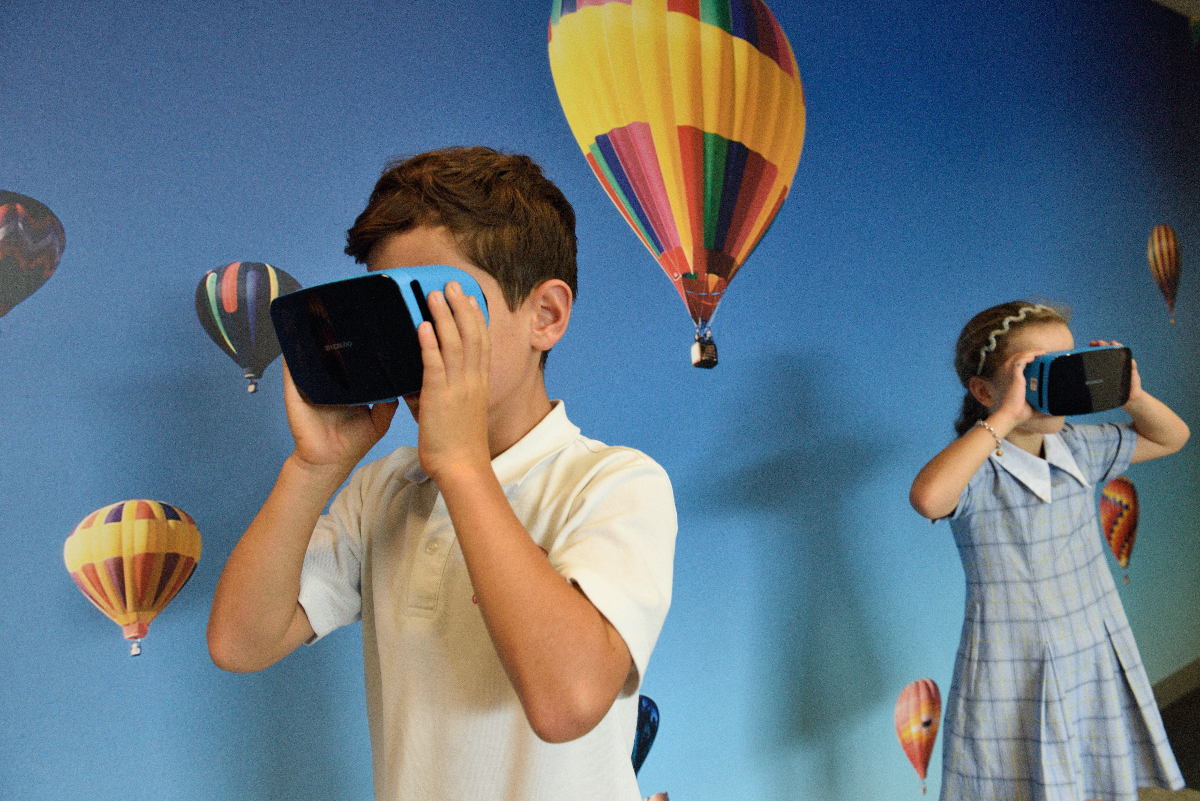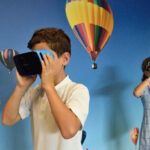Augmented Reality Apps Changing Education
Education is one of the pillars of our society and a necessary part of every child’s upbringing. While necessary, education, especially when done in a traditional sense, can sometimes be boring. As times have changed, so have the ways we educate our youth.
One of those ways is the use of augmented reality (AR) in the classroom. While it’s not traditional like a book or pencil, it has shown promise of being a way to transform education. It will allow students and teachers to engage in the classroom unlike any way before.
Read on to learn about some of the benefits of augmented reality as well as some of the AR apps that are changing education.
Augmented Reality & Education
Augmented reality is one of the three main forms of extended reality (XR) technologies. XR is the umbrella term that covers all immersive technologies such as augmented reality (AR), virtual reality (VR), and mixed reality (MR).
How AR works is that it overlays computer-generated content over the real world to provide the user with a composite view. The most well-known example of AR is the popular video game Pokemon Go.
Augmented reality has been around for decades. However, the public really started to take notice of it with the launch of Pokemon GO in 2016. The following year, Apple launched ARKit, and Google followed suit with its augmented reality platform, ARCore.
These software development kits (SDKs) made it easier for developers to create AR apps. Additionally, it provided them with an existing marketplace for people to access these apps. People also didn’t need to purchase dedicated devices for an augmented reality experience, they could have one with their everyday smart devices.
This made it easier and more affordable for teachers to take advantage of augmented reality. They could use it in the classroom to create an immersive learning environment for their students.
How Augmented Reality Can Help Educators
While on the surface, AR seems like a niche technology or one that’s not ready to be adopted in schools, that’s far from the truth. Most smart devices are capable of running AR apps which increases their accessibility to both students and teachers.
Due to this accessibility, many students/ teachers can benefit from the advantages of having augmented reality in the classroom.
- Interactive learning environment – AR allows teachers to create a more interactive learning environment for their students. This allows them to be creative and provide hands-on learning experiences to their students. This makes the students more engaged, invested, and excited about learning.
- Improved content understanding – One of the challenges with teaching is that some concepts are abstract or hard to visualize. Augmented reality allows students to see these concepts right in front of them. Seeing these visualized concepts allows them to get a better grasp of them and increases their comprehension.
- Increased retention – Stories are a great way to teach and help someone remember something. AR can allow students to see and experience different stories to help them better retain information.
- Sensory development – Augmented reality can allow teachers to make lesson plans with multisensory experiences. This guarantees students an immersive experience that allows them to experiment and try things out for themselves. Taking part in the experience rather than simply watching a demonstration can aid students in developing various skills and their senses.
How Teachers Can Use Augmented Reality In The Classroom
Augmented reality can be implemented in classrooms with relative ease and for various subjects. Even better, it can be done for both in-person and virtual classes.
Augmented Reality In Live Classes
As mentioned before, augmented reality is widely accessible thanks to Apple’s ARKit and Google’s ARCore. Teachers can use devices such as smartphones and tablets to access AR content. They don’t need a dedicated device such as a VR headset to expose their class to AR content.
It’s also important that teachers take time to plan and see how they’re going to incorporate augmented reality in their lessons. While there are a lot of great AR apps out there, and we’ll talk about a few in a bit. It’s critical to know which one will work for you, your class, and your students.
Some of the classes that can greatly benefit from augmented reality apps are Art, Science, and Math. There are also apps that teachers can use to create their AR content to suit their specific needs.
Augmented Reality In Virtual Classes
Virtual classes are also a great way to incorporate augmented reality content. While students are outside of the classroom, AR allows them to still interact with content in a fun way that allows them to be engaged and immersed.
While we’re not yet at the point where students can use AR glasses to project their teachers into their living rooms. Students can still interact with the material created and given by teachers while at home.
Best Augmented Reality Apps For The Classroom
Quiver
Quiver is a company dedicated to making learning fun with various AR apps that allow students to take their learning to the next level. Instead of focusing on a singular app, we thought all of Quiver’s apps deserved a feature.
Quiver Masks is where students can take the pages that they’ve colored, scan them, and wear them as AR masks. It’s a fun way for younger kids to put themselves in the story.
The flagship Quiver app allows your students to bring their coloring to the next level. They can use the app to scan the coloring pages that they and see them brought to life with the magic of AR.
Quiver Education is Quiver Vision’s premium app. It allows educators to pay a one-time subscription fee that gives them access to 72 AR coloring pages. These pages cover topics from Geology, Biology, the Solar System, and more. They apply from Pre-K to Year 4.
Google 3D Models
One of the best places to access great educational AR content is through Google’s search engine. You can access these via the Google Search app or in any browser. When you’ve searched for specific things such as Photosynthesis or Mitochondria, you’re able to see 3D models of these processes or organisms.
These models can then be projected with AR and allow students a better look. This can be great for science class and help students have a better understanding of these concepts. Google also offers great AR models of animals too which would be especially loved by smaller children.
Augmented Classroom
One of the benefits of digital content is the ability to collaborate with others to create something beautiful, even when you’re apart. Augmented Classroom is a browser-based app that allows students to learn about different plants and animals, and explore the environment from their devices.
You can assign students tasks and watch as they complete them. When they’re done, they can project their models into the real world with AR. Augmented classroom has activities surrounding space, geography, geometry, and more.
Narrator AR
Narrator AR is an app that was designed to help kids with their handwriting. It launches your children’s handwriting off the age and into the environment with augmented reality. it allows students to form a better connection with their handwriting and reinforces correct letter and number formation.
Assemblr
Empower your students’ creativity by allowing them to not only explore AR content but create it themselves. Assemblr provides them with the best of both worlds. Your students can take advantage of a variety of wonderful content from fractions, to animals, planets, and more.
Augmented Reality & Education Wrap Up
Education is the way forward for everything. When technology is integrated into the learning process, it prepares the future generation for what’s to come. Augmented reality allows kids to be immersed in their lessons and take their creativity to new heights.
It’s clear that even in its beginning stages augmented reality offers a host of benefits for both students and teachers alike. It allows students to improve their collaborative skills, sensory development, and information retention. It also allows teachers to take their lessons to the next level.
Augmented reality is a key part of the future of education, and this is just the beginning.


